The Vegan Traveler: Mustang, Nepal
This is the third of three posts about our epic trip to Bhutan and Nepal in August and September 2025. The first post is about our time in Bhutan, while the second is about our time in Pokhara, Nepal.
In March 2024, we were on the Vegan Travel Asia tour in Nepal (I didn’t write any blog posts at that time because life was crazy and my dad had just passed away). While we were there, our tour leaders told us about a new tour they’d be introducing to the Mustang region of Nepal.
We already loved Nepal. We decided we would come back for the Mustang tour even though it was more than a year away. Adding Bhutan and the interim time in Pokhara was a decision we made much later, long after we signed up for the Mustang tour (the itinerary on the website is a bit different from our itinerary. Since our trip was the first Vegan Travel Asia had run in Mustang, we expect there will be changes.)
Why Mustang?
Mustang is remote and unlike other parts of Nepal. Since many people have asked me whether the name is related to horses, I’ll start by clarifying that the name Mustang has nothing to do with horses: it comes from the Tibetan word Mun Tang, meaning “fertile plain.”
Mustang is divided into Upper Mustang and Lower Mustang. While Lower Mustang has been a tourist destination for quite a long time, Upper Mustang has seen little tourism and is primarily a trekking destination. The ethnic heritage and culture of the people of Mustang is Tibetan, and their language is similar to Tibetan. Upper Mustang was a separate kingdom (the Kingdom of Lo) and didn’t open to visitors until 1992. It still requires a special permit to visit, which keeps tourism low. Upper Mustang is in the rain shadow of the Annapurna and Dhaulagiri ranges: it is arid and stunningly beautiful.
There’s really only one way to get through Upper Mustang by vehicle: on a jeep road. The road follows the ancient salt trading route between Tibet and Nepal, and mostly follows the Kali Gandaki river. The Kali Gandaki river is a sacred place, originating in Tibet and flowing north to south through Nepal, eventually joining the Ganges in India. The banks of the Kali Gandaki are home to many pilgrimage sites, both Hindu and Buddhist.
The trip north through Mustang focused on the journey as much as the stops at pilgrimage and cultural locations. Our group met in Kathmandu, where we had our orientation meeting. The next morning we flew from Kathmandu to Pokhara to meet our jeeps.
Pokhara to Jomsom
From Pokhara to Jomsom much of the road was bumpy and winding.
Our first stop was at the Nepal Tourism and Hotel Management College for a welcome program and cooking class.
Our first night was in Beni, where we woke to the sound of the rushing Kali Gandaki river. We walked into Beni Bazaar and the Galeshwor Hindu temple before continuing to Kalopani.
From our lovely hotel in Kalopani we got our first look at the Himalayan mountains as we started making our way between Dhaulagiri and Nilgiri and up to Jomsom.
Marpha, Jomsom, and Muktinath Temple
From Kalopani we continued north toward Jomsom. Along the way we stopped at the Temperate Horticulture Development Center.
The Center has amazing gardens and 44 varieties of apples. The area has apple orchards everywhere, with dried apples and apple brandy available for sale in the local shops. We picked veggies to take with us further north.
We stayed in Jomsom for two nights, visiting Kutsab Ternga monastery, seeing amazing mountain views, eating incredible food, and then visiting Muktinath.
Muktinath is a revered pilgrimage site for both Hindus and Buddhists. We walked through the town and up the stairs to the temple, where were honored to receive both Hindu and Buddhist blessings. We then walked down a trail to the giant statue of Guru Rinpoche.
On the drive to and from Muktinath we went past blooming fields of buckwheat. Buckwheat is an important crop in the area and I had no idea it was so beautiful in bloom.
Another highlight of our time in this area was a visit to a Bon monastery. The Bon religion predates Buddhism in the area, and the monastery and foundation that supports it are working to preserve the ancient religion.
One of our fellow travelers set up a jam session at the coffee shop attached to our Jomsom hotel. Besides us, another fellow traveler plays guitar (and makes them!) The guy making coffee also plays keyboards and our chef sat in on congas. Super fun!
Tsarang (Charang)
From Jomsom we crossed into Upper Mustang and settled in for three amazing days in Tsarang.
As we passed into Upper Mustang, the road changed from paved to dirt and gravel. This area is much less traveled than Lower Mustang, and most of the tourism is trekking. A special permit is required to enter this area – it’s a trekking permit. The area wasn’t open to foreign tourists until 1992.
Upper Mustang feels like an entirely different world. The landscape is a high-altitude desert wilderness: arid, barren, and strikingly beautiful. The culture is Tibetan, and Tibetan Buddhism is part of life. Culturally, we saw more similarities between the Tibetan Buddhism of Upper Mustang and Bhutan than between Upper Mustang and other parts of Nepal.
Tsarang was astonishing. Located at 3570 meters (11,710 feet), we stayed in a heritage inn (Maya’s Heritage Inn) built by the niece of the last King of Mustang. She passed away recently and her brother was our gracious host. The food at every meal was incredible.
While in Tsarang, we visited the local, historic monastery, participated in a village trash cleanup, met with the local women’s group, and visited the nunnery that provides education for girls and young women from the area and other parts of Nepal.
Our time in Tsarang is something I will always remember.
Lo Manthang
Lo Manthang is a walled city in the former Kingdom of Lo. The wall was built in the 14th century and Lo was an independent kingdom until 2008. The city sits at 3840 meters (12,600 feet).
The city, with its narrow lanes, is home to several Buddhist monasteries. Outside the wall, trucks lined up to caravan to the Tibetan border for trade.
During the time there we visited some of the sky caves. There are thousands in the area dating back more than 2000 years. Climbing in the caves was one of the highlights of the trip.
While in Lo Manthang we had a cooking class, a program with local dancers, and a visit with a traditional Tibetan medicine doctor.
On our way to visit the yaks, we passed as close as foreigners can come to the border with China (Tibet): about 2km.
Samar, Tatopani, and Return to Pokhara
Our return from Upper Mustang took us back mostly the way we came.
At our stop in Samar we visited a Himalayan Griffon viewing site and enjoyed music from our travel group.
At our stop in Tatopani a few of us took advantage of the local hot springs. After many hours in the jeeps, the hot springs offered a nice way to relax.
Back in Pokhara we did a bit of shopping, went for a final vegan blueberry ice cream at Hang Over Takeaways, and had our farewell party before flying back to Kathmandu.
A final note: there was a political revolution in Nepal while we were there. The unrest was mostly in Kathmandu and Pokhara, the two largest cities. While we were not affected by it up in Mustang, our guides were very much affected and had contingency plans if the unrest continued. A few fellow travelers had to rebook flights, but otherwise our trip was mostly unaffected.
This was our fourth trip with Vegan Travel Asia by Vegvoyages. It certainly won’t be our last.
Share this post!

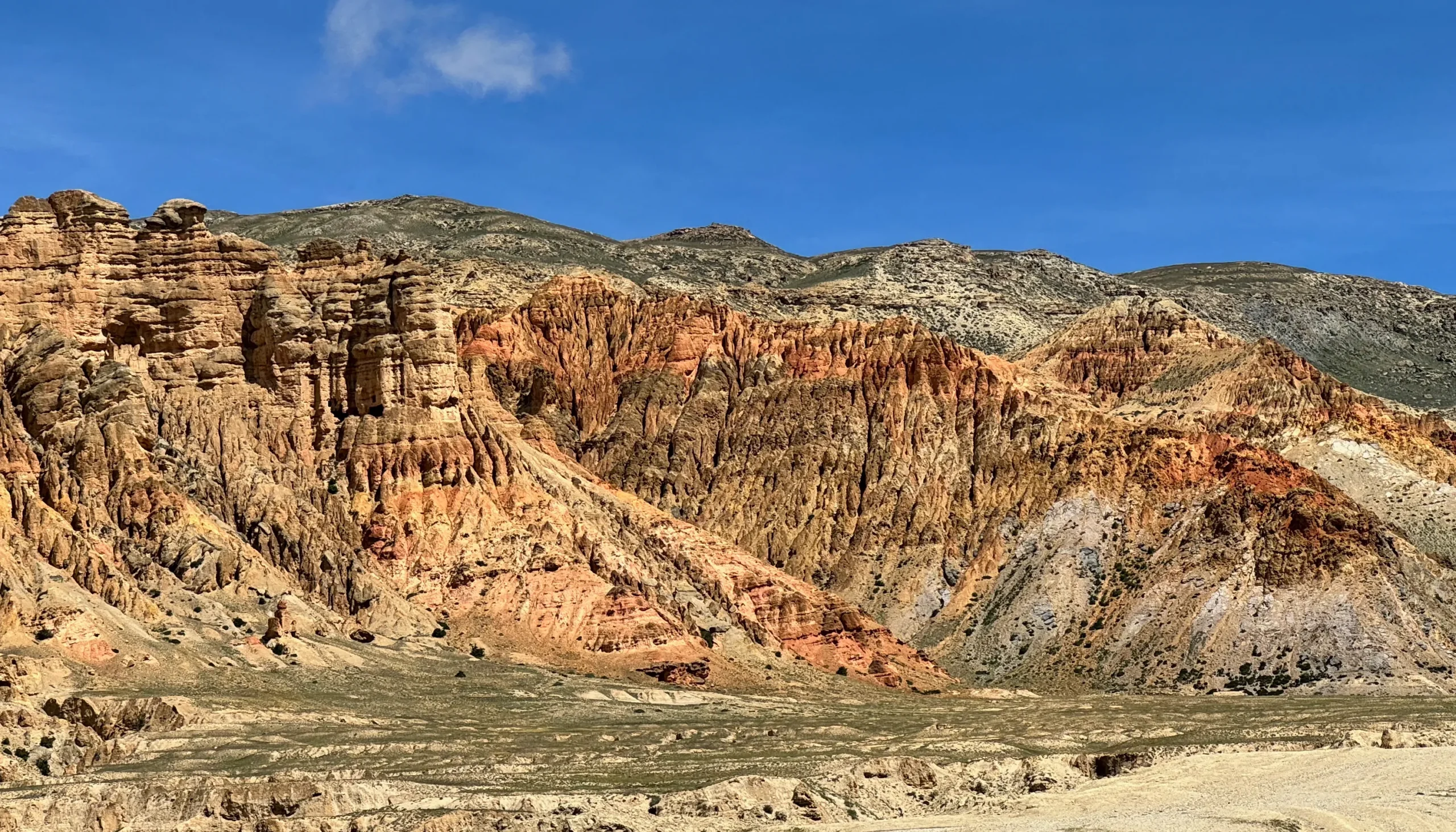





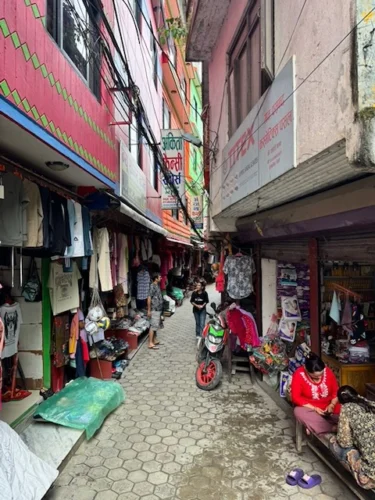
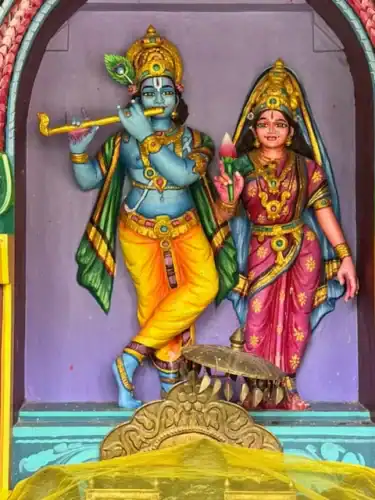
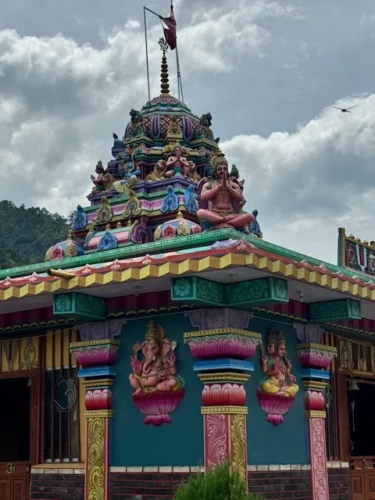
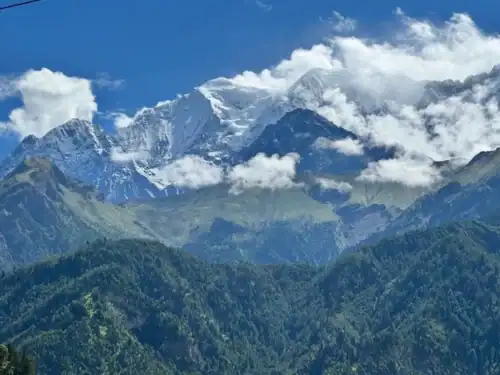
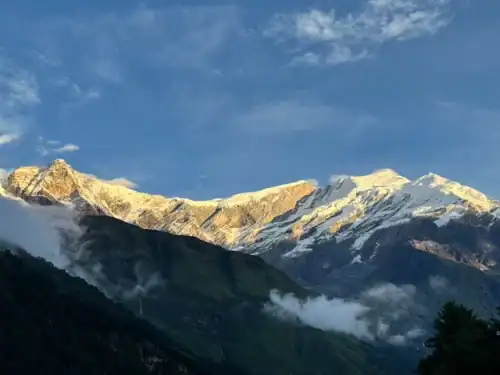

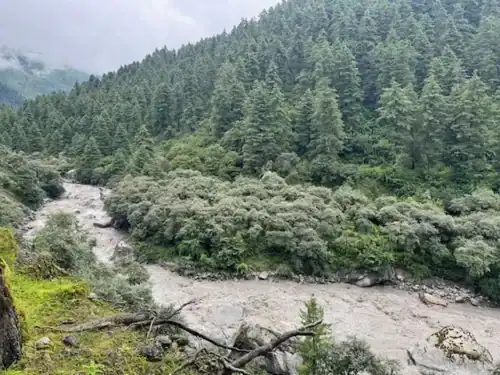
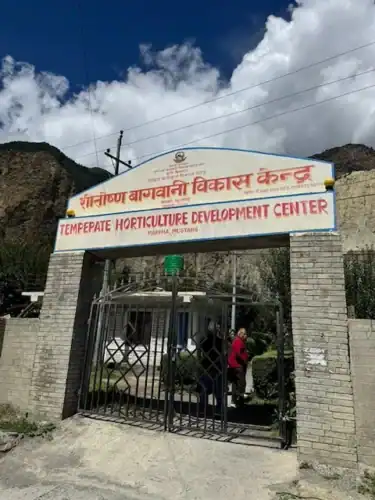

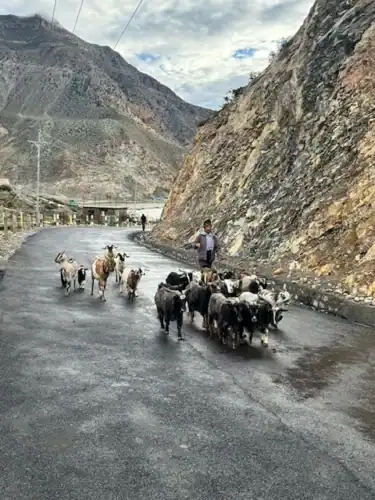
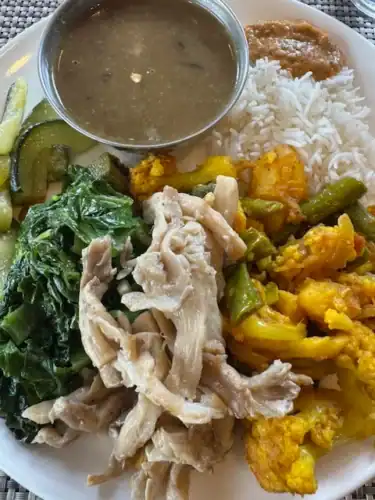
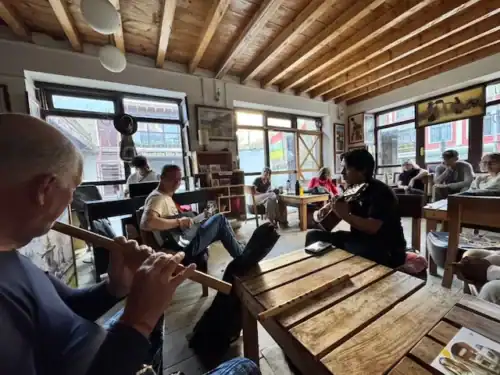
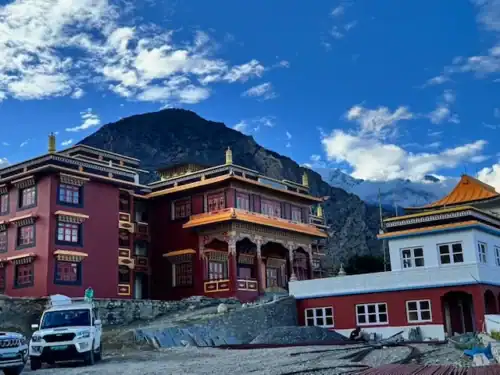
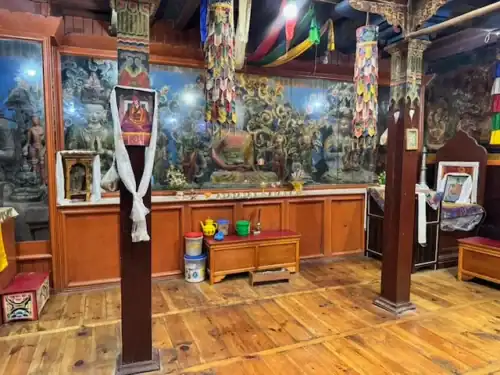
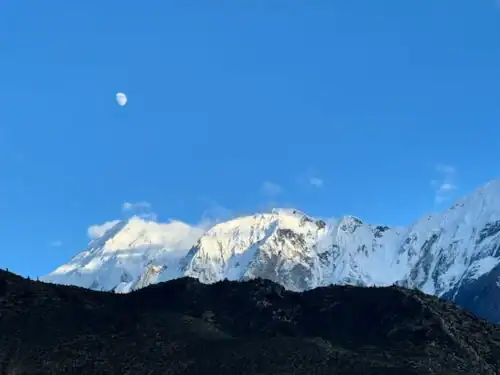
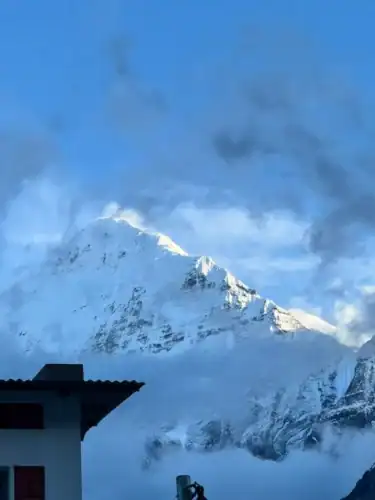

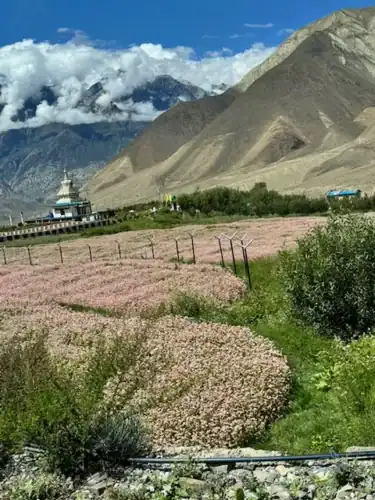
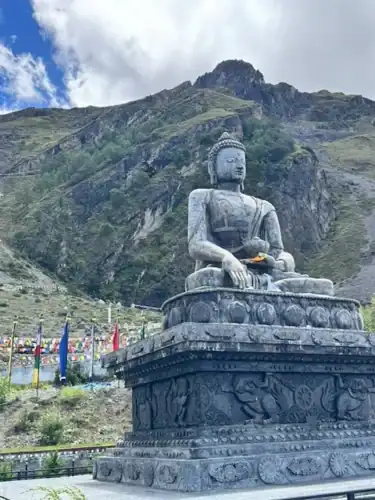
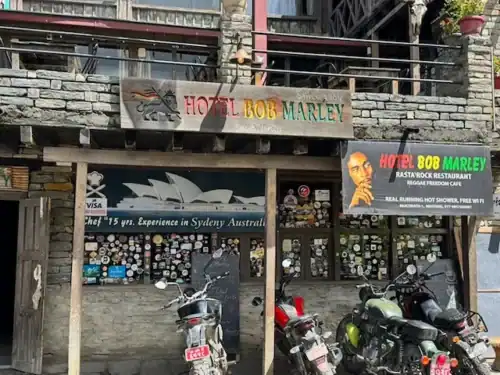
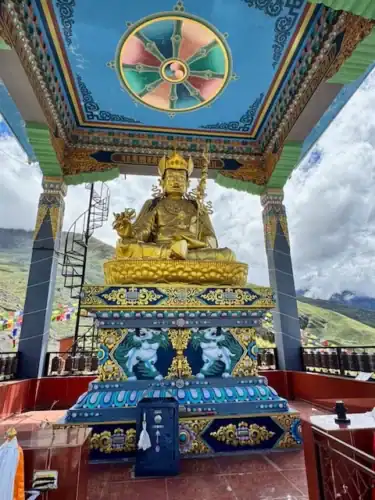
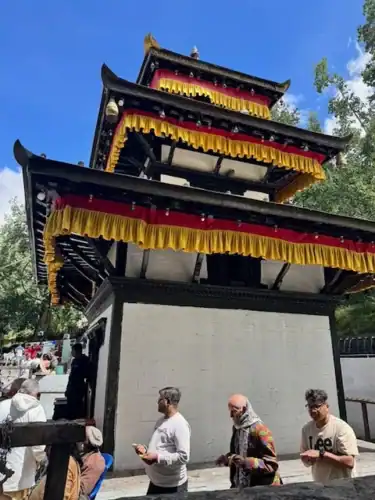
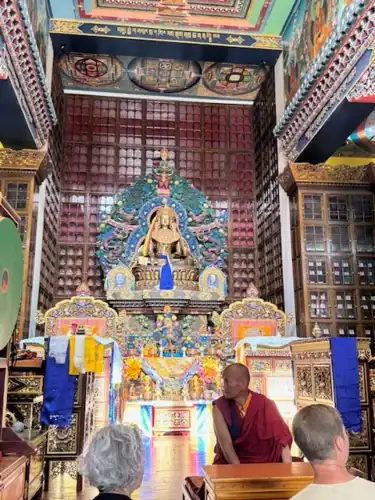
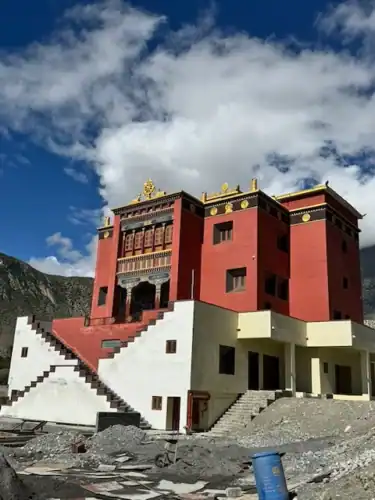
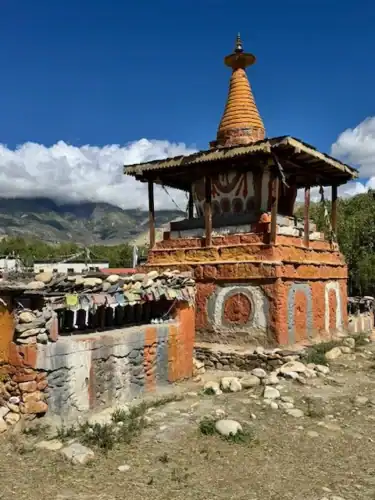
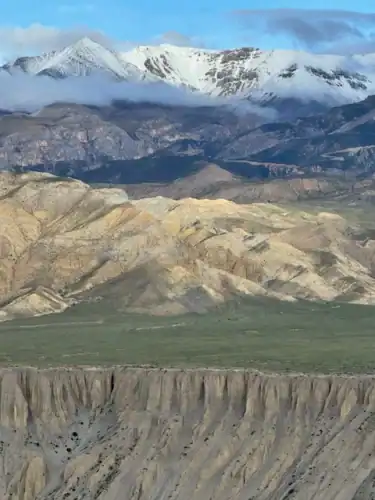
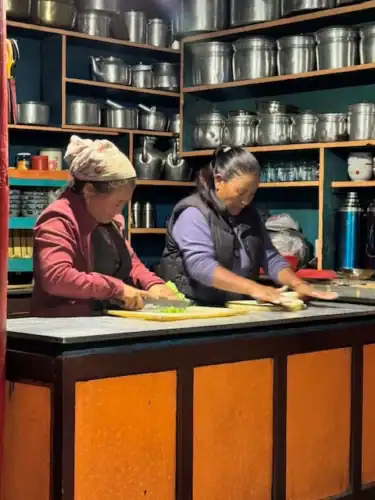



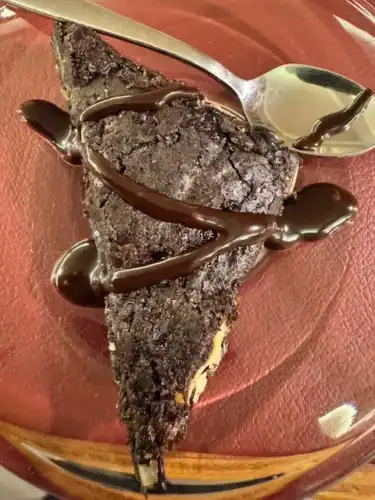
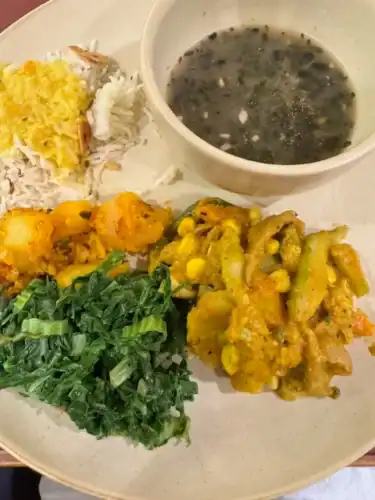

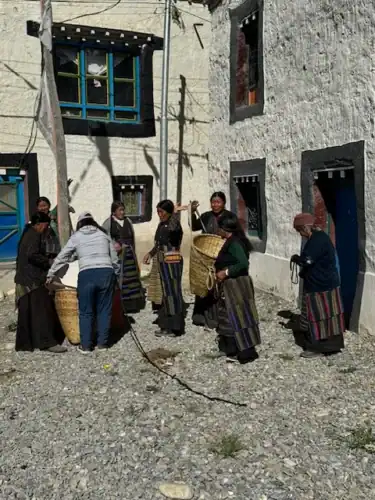

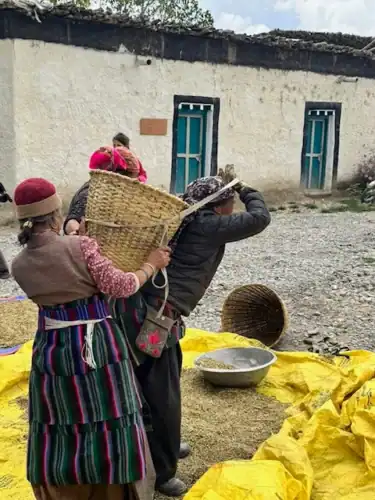
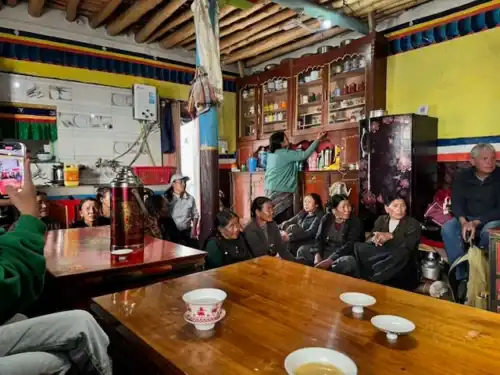
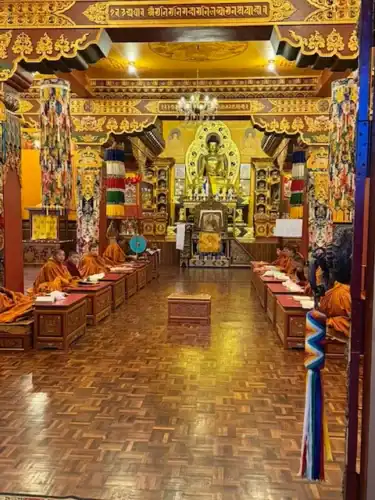
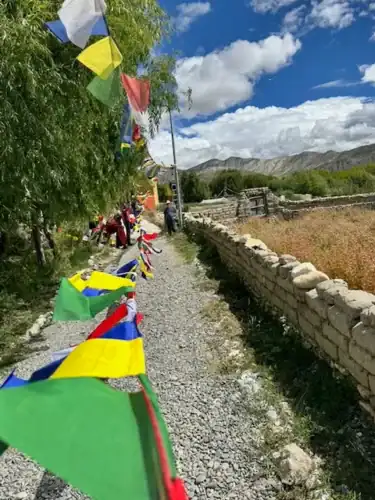
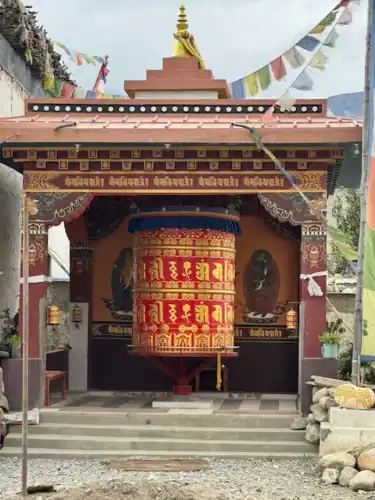
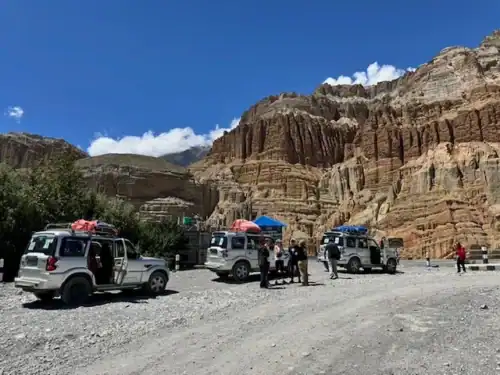


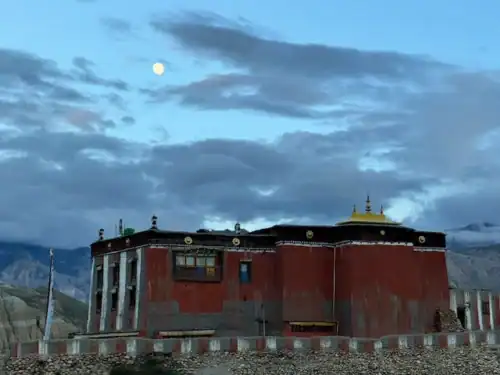
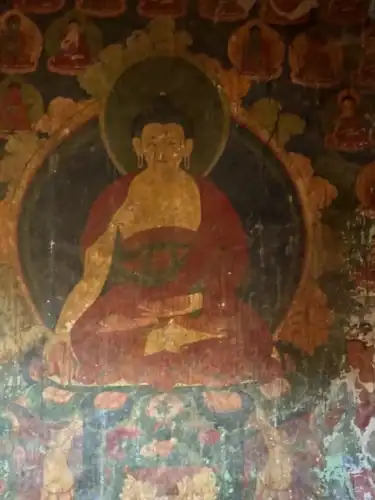
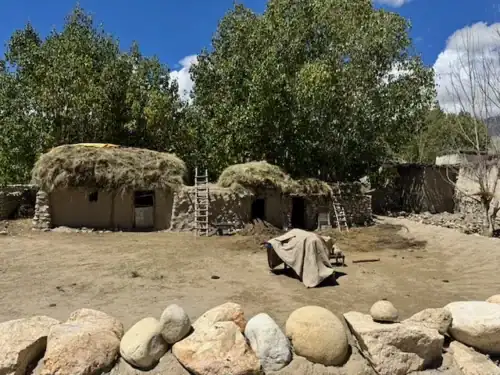

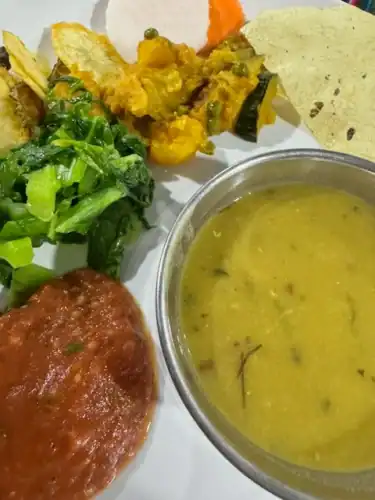
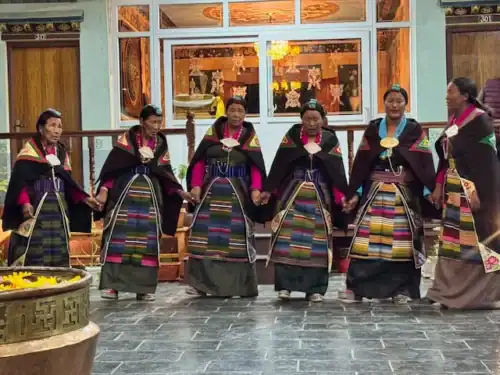
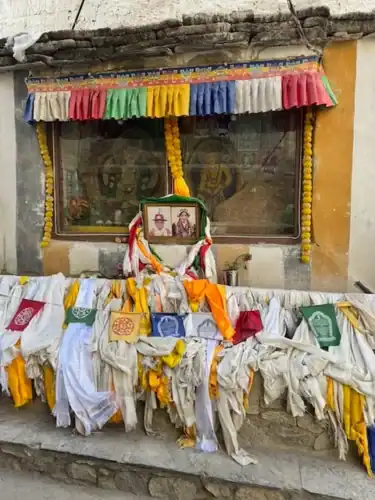
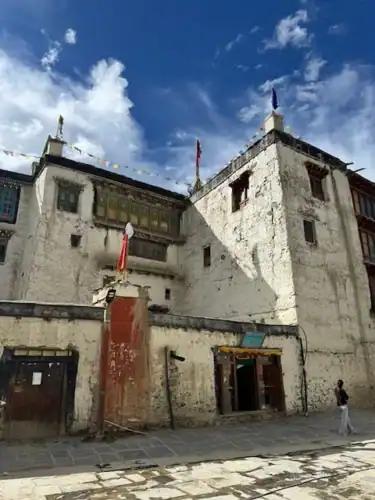
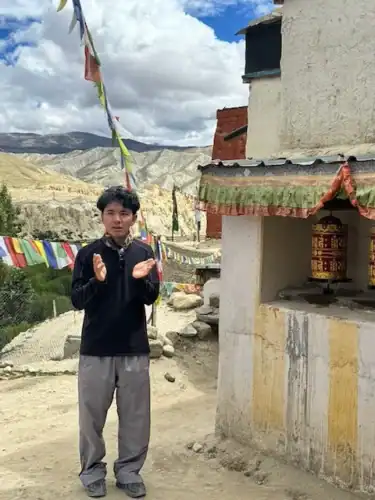
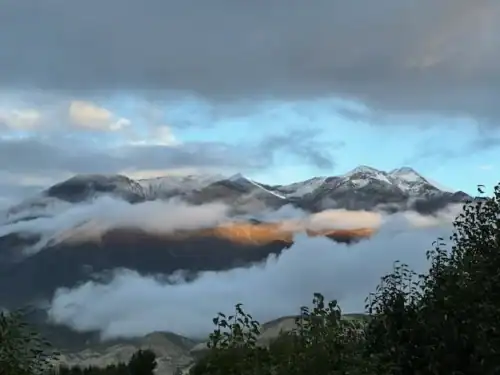
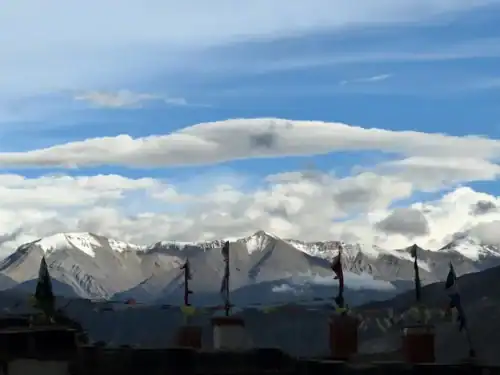
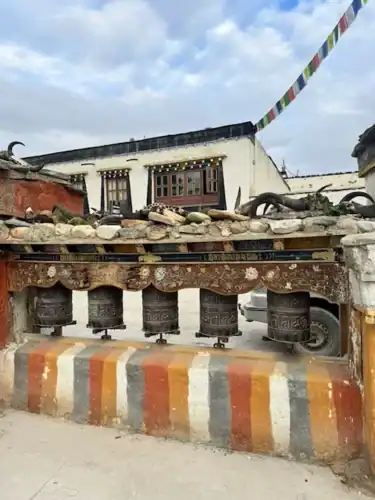
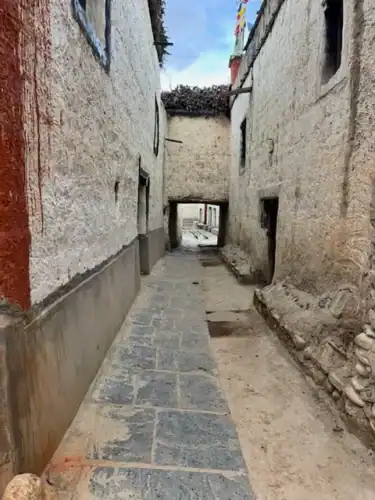

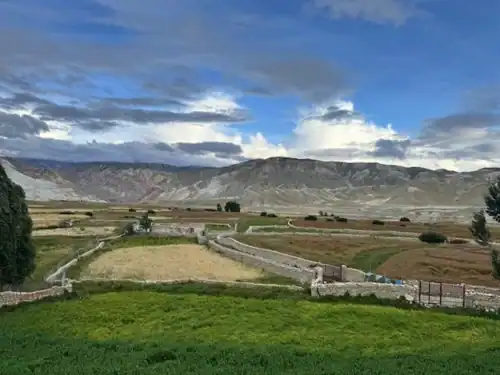
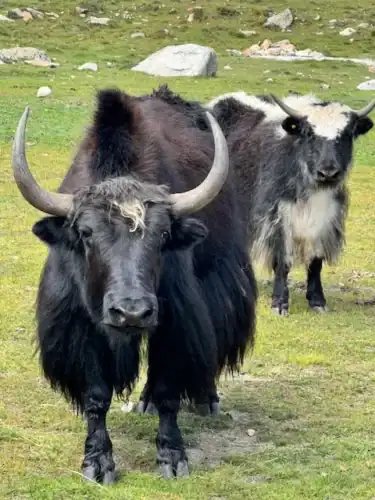
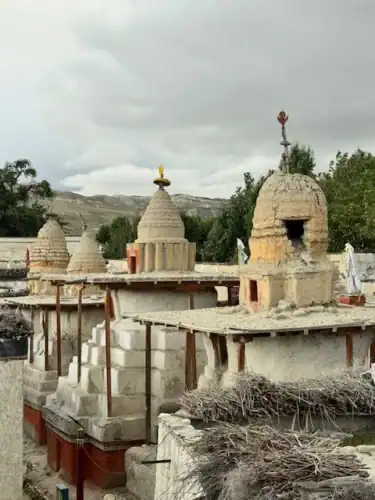
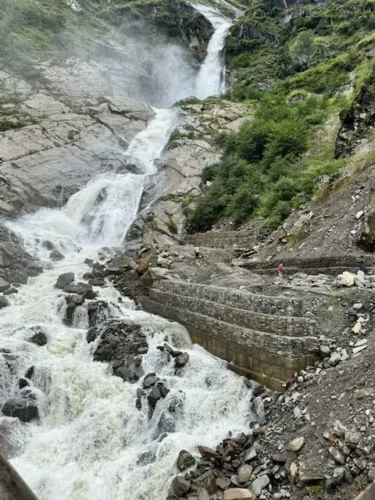

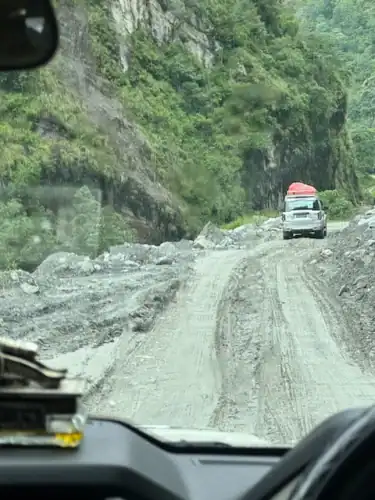
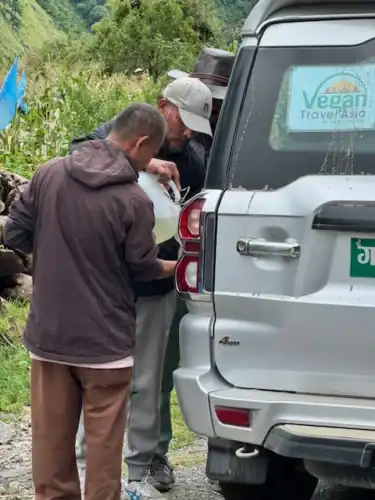
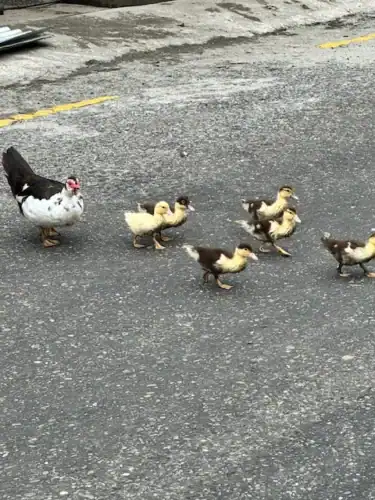
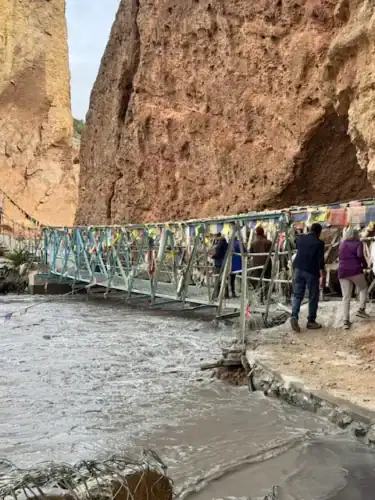
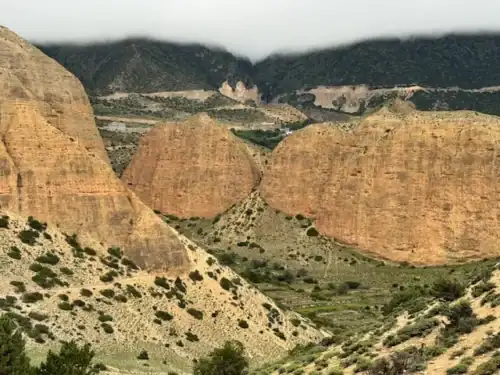
Great clicking through the photos!
Glad you enjoyed them!